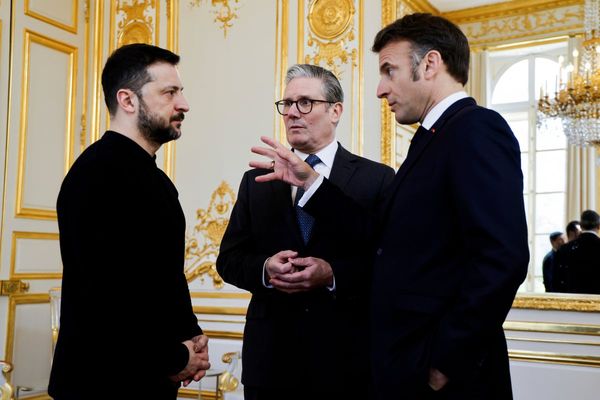
Tehran, Iran – Iran’s President Ebrahim Raisi has inaugurated the last phase of a major gasfield that has been reportedly built by local contractors after their foreign counterparts pulled out due to sanctions.
The president on Monday travelled to Asaluyeh in the southern province of Bushehr and visited Phase 11 of the South Pars gasfield after landing on the rig via a helicopter.
He spoke with officials and engineers at the platform and commended them for relying on their expertise to complete a project that had been lagging for nearly 20 years due to sanctions over Iran’s nuclear programme.
France’s TotalEnergies and the China National Petroleum Corporation (CNPC) pulled out of the project in 2018, shortly after then-US President Donald Trump unilaterally withdrew from Iran’s 2015 nuclear deal with world powers and imposed harsh sanctions.
Earlier sanctions imposed prior to the implementation of the nuclear deal – which had lifted sanctions in exchange for curbs on Iran’s nuclear capabilities – had initially left the project dormant.
The project was then awarded to local counterparts, which operated under the auspices of the National Iranian Oil Company (NIOC).
“We have said that we will work and cooperate with everyone around the world, but we are showing that if a company comes in and abandons the project midway, we won’t abandon it,” the president said on Monday.
Raisi said in addition to having been completed indigenously, the project stands out in other ways, including by crossing the finish line some four years earlier than initially projected.
That, he and other officials said, was done partly by taking one of the platforms at the discontinued Phase 12 of South Pars and installing it at Phase 11. Local media reported the 3,200-tonne platform was moved after buying a crane ship from Russia.
Petroleum Minister Javad Owji told a gathering marking the inauguration that, in addition, Iranian engineers managed to save about $800m in expenses by transporting an existing platform.
The foreign companies that abandoned the project “are now left flabbergasted” after seeing its completion, he said.
Iran actually started extracting gas from the field, parts of which it shares with Qatar, earlier this month and began transporting it to onshore facilities using an undersea pipeline, according to Deputy Petroleum Minister Mohsen Khojastehmehr.
According to ministry officials, when Phase 11 is fully developed in the coming years, Iran will be able to tap 24 wells to add up to 56 million cubic metres per day to its capacity. Current extraction levels reportedly stand at about 15 million cubic metres a day.
According to official figures, Iran currently produces about 1 billion cubic metres per day of natural gas and plans to raise production capacity by another 500 million cubic metres per day by 2029.
Iran at the moment exports gas to neighbouring Turkey and Iraq and has swap deals with Turkmenistan and Armenia.
The news on Monday also came days after Raisi travelled to Johannesburg for a BRICS meeting, where Iran was one of six new members invited to join the influential group in 2024.
The president announced that Iran has reached an agreement with South Africa to renovate or revitalise five refineries in the African nation.







